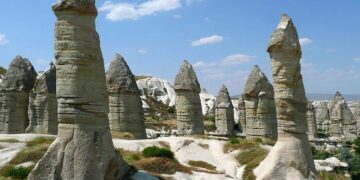As climate change fuels rising sea levels and intensifying storms, coastal communities face unprecedented challenges to their safety and sustainability. In response, NASA’s Earth Science division is stepping up with cutting-edge satellite data and advanced modeling tools designed to bolster resilience along vulnerable shorelines. Through its Applied Sciences program, NASA is partnering with local governments, scientists, and planners to translate space-based observations into actionable strategies that enhance disaster preparedness, inform infrastructure planning, and protect ecosystems. This article explores how NASA’s Earth Science innovations are empowering coastal communities to adapt and thrive amid growing environmental threats.
NASA Earth Science Data Enhances Coastal Risk Assessment and Early Warning Systems
Leveraging cutting-edge satellite imagery and climate modeling, NASA’s Earth Science data provides unparalleled insights into the dynamic conditions affecting coastal zones. This wealth of information supports local governments and emergency responders in crafting tailored risk assessments that accurately pinpoint vulnerable areas. From tracking sea level rise and storm surge patterns to monitoring erosion and sediment transport, the integration of these datasets enhances predictive capabilities, enabling communities to prepare proactively for extreme weather events.
Key benefits of NASA Earth Science data in coastal risk management include:
- Real-time monitoring of oceanic and atmospheric conditions
- Improved forecast accuracy for hurricanes and flooding
- Enhanced visualization tools for community planners and stakeholders
- Data-driven early warning systems that save lives and minimize economic impact
| Data Type | Application | Impact |
|---|---|---|
| Satellite Altimetry | Sea Level Monitoring | Improved flood zone mapping |
| Thermal Infrared Imaging | Coastal Temperature Analysis | Identifies heat stress risks |
| Precipitation Radars | Storm Intensity Forecasting | Enhanced early warnings |
Integrating Satellite Technology with Local Knowledge to Strengthen Community Preparedness
Coastal communities are increasingly vulnerable to the impacts of climate change, from rising sea levels to intensified storms. By harnessing satellite technology, particularly NASA’s advanced Earth observation systems, local leaders and residents gain unprecedented insights into environmental changes in real time. This integration allows for precise monitoring of shoreline shifts, flood risks, and weather patterns that directly affect these communities. Satellite data is combined with indigenous knowledge and local observations, creating a holistic understanding that empowers timely decision-making and targeted response strategies.
Practical applications of this synergy include enhanced early warning systems and community-led adaptation plans. For instance, local fishers and farmers use satellite imagery to anticipate changes in marine biodiversity and crop conditions, adapting their practices accordingly. Key elements driving resilience include:
- Collaborative data sharing platforms between NASA scientists and community stakeholders
- Training programs in satellite data interpretation tailored for local users
- Community workshops integrating traditional ecological knowledge with satellite insights
| Satellite Data Type | Local Application | Community Benefit |
|---|---|---|
| Sea Surface Temperature | Monitor fish migration patterns | Supports sustainable fishing |
| Land Elevation Models | Assess flood-prone zones | Improves emergency planning |
| Storm Tracking Imagery | Predict storm impact timing | Enhances evacuation efficiency |
Policy Recommendations for Leveraging NASA Resources in Coastal Resilience Planning
Enhance Interagency Collaboration: Coastal resilience planning benefits greatly from the integration of NASA’s advanced Earth observation technologies into existing frameworks. Policymakers should mandate formal partnerships between NASA, local governments, and environmental agencies to facilitate real-time data sharing and joint analytics. This approach will enable faster identification of vulnerable zones, early warning for storm surges, and effective resource allocation during climate emergencies.
Invest in Accessible Decision Support Systems: To maximize NASA’s contributions, funding should be directed toward user-friendly platforms that translate complex satellite data into actionable insights for planners and community leaders. Developing mobile applications and web-based dashboards that incorporate NASA’s remote sensing products will democratize access, ensuring smaller municipalities with limited technical capacity can leverage this crucial information.
| Policy Focus | Benefit | Key NASA Resource |
|---|---|---|
| Data Sharing Protocols | Improved coordination and rapid response | Earth Science Data Systems |
| User-Centric Tools | Enhanced decision-making at local levels | NASA Applied Sciences Program |
| Capacity Building | Increased technical proficiency and resilience | Training & Outreach Initiatives |
The Way Forward
As coastal communities worldwide face increasing threats from climate change, NASA’s Earth Science initiatives offer vital tools to enhance resilience and preparedness. By leveraging advanced satellite data and applied research, local leaders and stakeholders gain critical insights to anticipate hazards, inform planning, and safeguard vulnerable populations. NASA’s ongoing collaboration with coastal regions underscores the crucial role of cutting-edge science in building sustainable futures amid rising seas and intensified storms. As these partnerships deepen, the promise of data-driven solutions continues to grow, empowering communities to adapt and thrive in an uncertain climate landscape.































